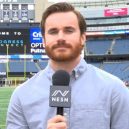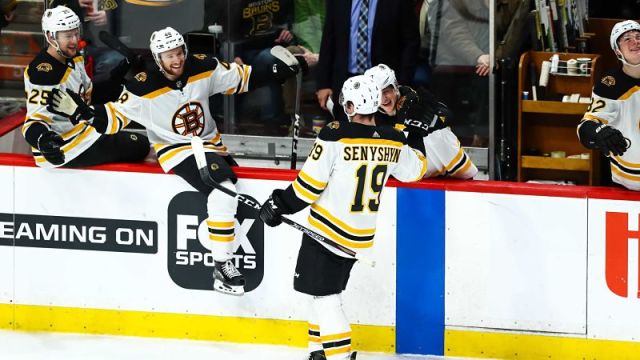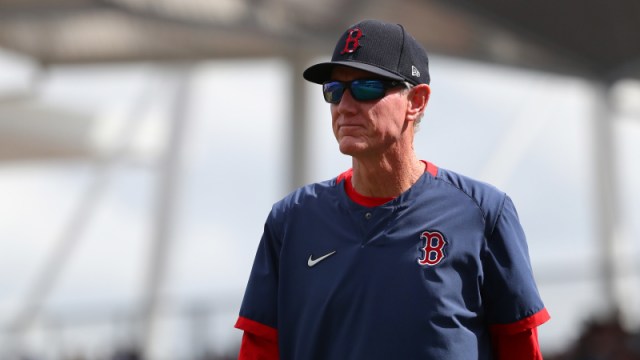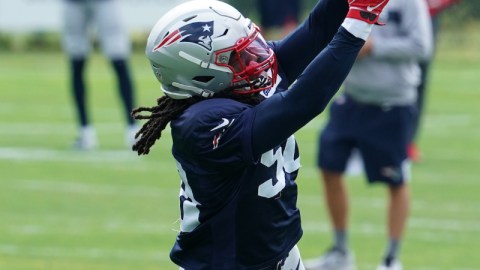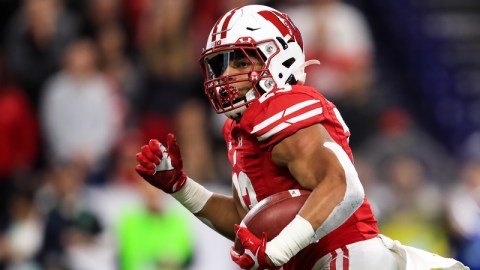Like many Americans, the New England Patriots are adapting to work-from-home life as they ride out the COVID-19 pandemic.
With Gillette Stadium shuttered and organized team activities wiped out, the Patriots — along with the rest of the NFL — are navigating their first virtual offseason program, which includes daily video conferences between players and coaches.
Cornerback Jonathan Jones offered some insight into these meetings Tuesday during a news conference with reporters, which, of course, also was conducted via video chat.
“It’s been fun,” Jones said. “It’s definitely been a changeup. Just the coaches we have, to get the camaraderie of the group. The rookies just joined in with us, so just having that camaraderie, everyone getting to talk and spend time with each other, it’s a little different, but as with everything, you learn to adapt.
“And it’s been fun to just get back with the guys and have the jokes going back and forth across the meetings, as well as get back to talking ball at an elite level with the coaches and everyone. … Just having everyone in the meetings, day in and day out, and finally be around each other kind of brings out that side of football. We’re not there in the facilities, obviously, to interact with each other, but the virtual meetings have been just that.”
NFL teams in many states will be permitted to reopen their facilities to select personnel this week, but coaches and players remain barred from all team headquarters, save for those undergoing treatment or rehab. It remains unclear when teams will be allowed to resume on-field practice and whether the traditional late-July start of training camps will be delayed.
In the meantime, the onus falls on the players to keep themselves in shape. In New England, that means completing at-home workouts crafted by the Patriots’ strength and conditioning staff.
“We’re staying on our routine of trying to maintain our normal workouts,” said Jones, who built himself a home gym. “I would say the lack of competition that we get when we start (spring practice), we haven’t really got to that phase. But we’re starting to get to (where we would be) going against the offense in live situations, so I think that’s the only thing that’s missing.
“But as far as workouts and conditioning, we’re doing the same regimen we’d be doing while we’re there. I don’t really think that’s changed much. I think the live work that we’d be getting going into Phase 2 and the OTAs is what you might miss the most.”
More Patriots: Could This Undrafted Receiver Be Next J.C. Jackson?
And with physical, on-field competition not possible in the current climate, mental reps must come in those virtual meeting rooms.
“I think (our goal) is to have everyone on the same mental plane as far as communication, refreshing that,” Jones said. “Even for the veteran guys, just hearing some of those terminologies over and over again, and starting from scratch. That’s something that we do every year. We don’t assume that everyone knows anything, so we start the playbook from Page 1. …
“I think the communication of that is so key. We’re missing the physical aspect of it, but just having that communication is very key.”
Communication is especially important in the secondary, and the Patriots were fortunate enough to keep theirs largely intact this offseason.
Third safety Duron Harmon (traded to Detroit) was the lone notable departure, with safety/co-captain Devin McCourty re-signing and every 2019 cornerback remaining under contract for 2020. New England also buttressed its safety group by using its top draft pick on Kyle Dugger and signing free agents Adrian Phillips and Cody Davis.
Jones, a fifth-year pro who plays both slot corner and safety in the Patriots’ defense, said the team’s back-end continuity can only help in this unprecedented offseason.
“I think that’ll be extremely (advantageous) for us if we use it to that advantage,” Jones said. “(But we need) to continue to get on our communication, to stay on the same page. I know we use the word ‘communication’ over and over, because in football that’s so key to get 11 guys to see the same picture at the same time.
“So on the back end, just having those guys who have seen the same thing over and over, and there’s subtle communication between each other that we keep growing and understanding. So getting back to that once we get on the field, I think we’ll be a step ahead, but we have to continue that with these meetings.”
